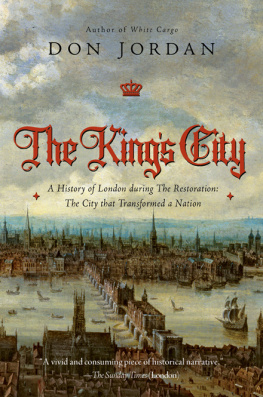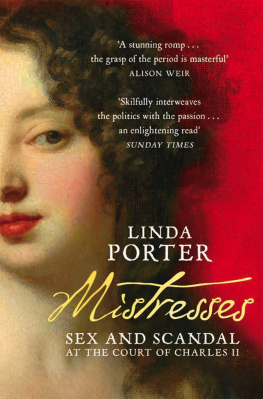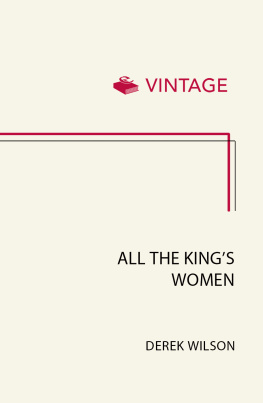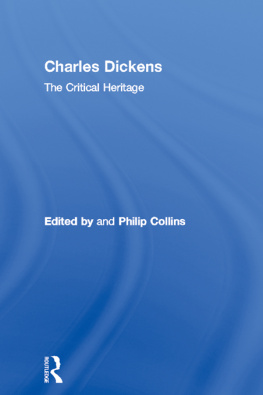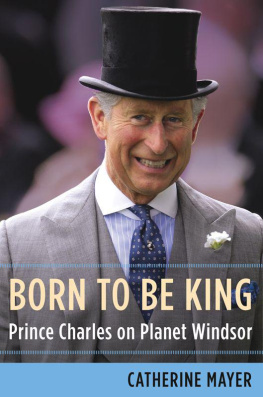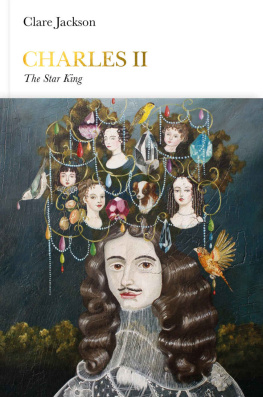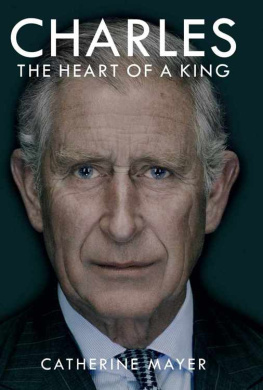
Also by Don Jordan and Michael Walsh:
Van Hoogstraten: Blood and Retribution
White Cargo: The Forgotten History of
Britains White Slaves in America
The Kings Revenge: Charles II and the
Greatest Manhunt in British History
THE
Kings
Bed
Sex and Power in the Court of Charles II
DON JORDAN & MICHAEL WALSH

PEGASUS BOOKS
NEW YORK LONDON
THE KINGS BED
Pegasus Books Ltd
80 Broad Street, 5th Floor
New York, NY 10004
Copyright 2015 by Don Jordan and Michael Walch
First Pegasus Books hardcover edition March 2016
All rights reserved. No part of this book may be reproduced in whole or in part without
written permission from the publisher, except by reviewers who may quote brief excerpts in
connection with a review in a newspaper, magazine, or electronic publication; nor may any part
of this book be reproduced, stored in a retrieval system, or transmitted in any form
or by any means electronic, mechanical, photocopying, recording,
or other, without written permission from the publisher.
ISBN: 978-1-60598-969-3
ISBN: 978-1-68177-111-3 (e-book)
Distributed by W. W. Norton & Company, Inc.
To Dian and Eithne
An excellent prince doubtless had he been less addicted to women.
John Evelyn
The sexual revolution began in the sixties the 1660s. When Charles II of England, Scotland and Ireland ascended to the throne in 1660 he became pivotal to a sexual upheaval at the top of English society. The newly reconstituted royal Court of St James blossomed into a seraglio of pleasure. The Puritans emphasis on chastity was cast aside and the court threw itself into a vortex of giddy sensuality. At the heart of the revolution were Charles and his many lovers.
While writing our previous book on Charles II, The Kings Revenge, we became aware of just how important the Kings mistresses were in the life of both court and monarch. When the people of London came out in the autumn of 1660 to watch the executions of some of those responsible for beheading the Kings father Charles I, Charles II was cavorting with his current mistress, Barbara Palmer, the irresistibly sexy wife of one of his close supporters. From this contrasting tableau of torture and pleasure we began to consider to what extent Charless mistresses had held power over his life. For example, had previous writers underplayed their importance? Contemporaries who wrote about their king certainly thought he spent too little time on affairs of state and too much time purely on aff irs. This being so, we wondered if it might be possible to unravel something of Charless character through these relationships. The result of these ruminations is the present book.
Charles not only loved the physical allure of women, he also adored their company their society and gossip, the games, the rivalry, the coquetry. He surrounded himself with women, keeping former mistresses on his payroll in the royal seraglio at Westminster long after passion had abated. Some of his mistresses held such sway over him that they were in control of the relationship. Th s influence went beyond the bedroom to affect foreign and domestic policy. Barbara Palmer, who dominated the fi st decade of his reign, worked as a spy for France and connived successfully to persuade Charles to sack the most important statesman of the Restoration. His last great paramour, the Breton noblewoman Louise de Krouaille, was a French agent who helped pave the way for England to become a puppet of the Sun King, Louis XIV.
We felt that if a king could allow his mistresses such power, then the way to the core of the man would surely be via his relationships. The Kings Bed traces the impact of women on Charles in an attempt to understand his personality. So many contrasting views have been provided as to his character ranging from essentially loveable, according to Antonia Frazer, to cold, according to Professor Ronald Hutton that we felt there was a case to reconsider this intriguing character in the light of the evidence provided by his private life.
Whitehall became a palace of fun, frequented by men and women who delighted in kicking over the sexual constraints of previous times. The libidinous king and his licentious court were the most potent symptoms of sudden and profound social change within the higher sections of English society. The years of the Restoration constituted an era of sexual liberation for women as well as men. For those who wished, and who had sufficie t social standing, it was a time of increasing freedom and experimentation.
The Kings Bed also tells the story of the role of Charles II and his many women within what has only just begun to be recognised most notably by Professor Faramerz Dabhoiwala of Oxford University in his groundbreaking work The Origins of Sex as a revolution which began during Charless reign and grew apace during the following century. Charles did not drive the revolution but he was its figu ehead. In an age when adultery and fornication were frowned upon, and in which the law and the church wielded severe sanctions against such behaviour, the fact that it became public knowledge that the King had a series of mistresses heralded a turning point. The new licentiousness even had its cheerleaders in the playwrights of the day. In Restoration comedies, what mattered was not that adultery was committed but that it was committed with style. Suddenly, the sin was not the sex but a lack of panache.
Of course, up to this point, sexually promiscuous men like Samuel Pepys could, if they so wished, seek out and buy literary pornography, but they kept quiet about it. In the reign of Charles II, however, cracks in sexual discipline began to appear at the highest levels of society. Ultimately this led to the question being publicly posed might not consenting adults do what they pleased, within reason? Put together with then-current ideas about sexuality, including the belief that women had to have an orgasm to conceive, the new freedoms Charless reign brought in provided a sexual playground, albeit one in which men continued to hold most of the advantages. And no one had more advantages and more sexual partners than the King.
It became clear to us that Charles was not simply the randy king portrayed so often. It was more than that: women were an obsession with him. Among those he lusted after were some who became famous historical figu es, such as Lucy Walter, Nell Gwyn and Barbara Palmer. There were many, many more we dont know about, one-nighters smuggled up from the river under darkness, then up a stairwell from a private jetty, for a quick fli g in an anteroom kept specially for the purpose. The women varied from the rumbustious to the mild-mannered, from the brazen to the calculating, from common prostitutes to actresses and aristocrats. They all played their part in the Kings sensuous dream world.
So this is not a book simply about Charles; it is also about his women. We cannot hope to tell the stories of all of them the identity of many is simply not known. But we do know a good deal about many of them. The most important were the subject of constant gossip, appearing in bawdy ballads sold for sixpence a pop, in memoirs, diaries, letters and even such was their prominence offi al diplomatic reports. And all these and more were the sources for this work.
We decided we must recount what fi ally became of Charless major mistresses and his numerous children. Without them, British life would be less varied and certainly less interesting. Together, the women and their off pring have created a surprising legacy that has come down to us today. Thanks to them, Charless personal life is now more relevant than ever.
Next page

